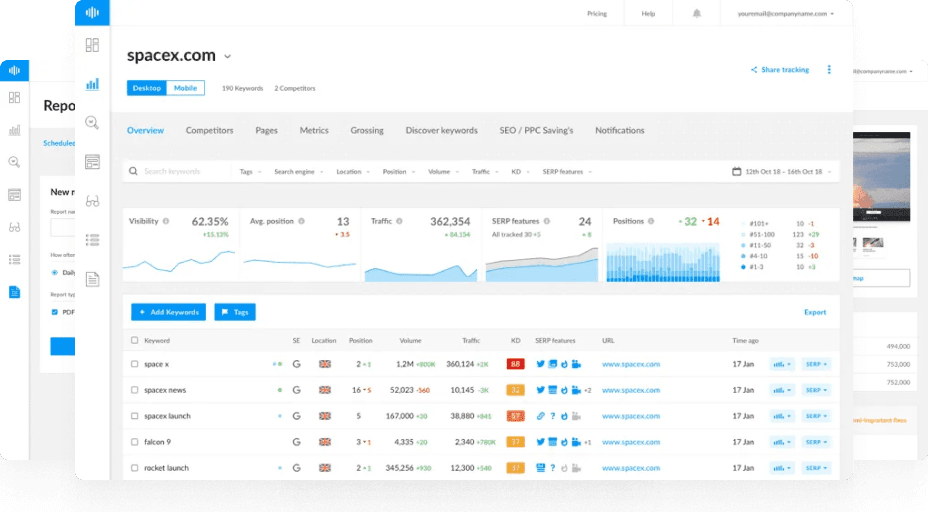What Are HTTP/2 and HTTP/3?
HTTP/2 and HTTP/3 are modern versions of the Hypertext Transfer Protocol (HTTP) — the backbone of all web communication.
They were developed to overcome the limitations of HTTP/1.1, which allowed only one request per connection, causing delays in loading web pages.
Both versions introduce faster, more secure, and more efficient data delivery methods that significantly enhance Core Web Vitals, user experience, and SEO performance.
HTTP/2: Faster, Simpler, and Multiplexed
Key Features
-
Multiplexing
- Allows multiple requests and responses to be sent simultaneously over a single TCP connection.
- Eliminates the “head-of-line blocking” problem present in HTTP/1.1.
-
Header Compression
- Uses HPACK compression to reduce the overhead of HTTP headers, speeding up communication.
-
Stream Prioritization
- Lets browsers prioritize critical resources (like above-the-fold images or CSS) to improve perceived load time.
-
Server Push (now deprecated in browsers like Chrome)
- Previously allowed servers to send assets before the browser requested them, improving initial page load performance.
SEO Benefits of HTTP/2
- Faster Loading = Better Rankings: Improved page speed boosts LCP (Largest Contentful Paint).
- Reduced Latency: Increases crawl efficiency and user engagement.
- Better Crawl Budget Utilization: Googlebot supports HTTP/2, meaning faster crawling for optimized servers.
HTTP/3: The Next Step Forward
How HTTP/3 Works
HTTP/3 builds on the QUIC (Quick UDP Internet Connections) protocol, developed by Google.
Unlike HTTP/2 (which relies on TCP), QUIC uses UDP, allowing faster, more reliable connections — even on unstable networks.
Key Improvements
-
Eliminates TCP Handshake Delays
- Establishes secure connections in one round trip (0-RTT) instead of the multiple handshakes required in HTTP/2.
-
No Head-of-Line Blocking
- QUIC allows independent packet streams — one delayed packet doesn’t slow down others.
-
Built-In Encryption
- Uses TLS 1.3 natively, improving both security and speed.
-
Better Mobile Performance
- Seamless connection migration when users switch from Wi-Fi to mobile data.
SEO Benefits of HTTP/3
- Improved Core Web Vitals: Faster response times enhance LCP and INP metrics.
- Resilience on Mobile: Reduces bounce rates from connectivity interruptions.
- Enhanced Security: Built-in TLS improves trust signals and HTTPS compliance.
Related Performance Technologies
Modern web performance doesn’t stop with HTTP/2 and HTTP/3.
Below are additional technologies and practices that support high-performing, SEO-friendly websites.
1. HSTS (HTTP Strict Transport Security)
- Forces browsers to use HTTPS connections for all requests.
- Prevents insecure HTTP requests and improves trust and security.
- SEO Impact: Ensures consistent HTTPS indexing and prevents duplicate protocol issues.
2. Brotli Compression
- Developed by Google, Brotli offers superior text compression compared to GZIP.
- Reduces file sizes for HTML, CSS, and JavaScript by up to 25%.
- SEO Impact: Smaller payloads mean faster rendering and better Core Web Vitals.
3. Preload
- Instructs the browser to prioritize critical resources like hero images, CSS, or fonts.
- Implement using
<link rel="preload" as="style" href="styles.css">. - SEO Impact: Helps achieve faster First Contentful Paint (FCP).
4. Prefetch
- Allows browsers to load resources that might be needed soon, improving navigation speed.
- Example:
<link rel="prefetch" href="/next-page.html">. - SEO Impact: Improves user experience metrics that indirectly influence rankings.
5. Preconnect
- Establishes early connections to third-party domains (e.g., CDNs, analytics, fonts).
- Example:
<link rel="preconnect" href="https://fonts.googleapis.com">. - SEO Impact: Reduces DNS lookup and connection latency.
6. Lazy Loading
- Delays the loading of off-screen images and videos until they’re needed.
- Example:
<img src="image.jpg" loading="lazy" alt="example">. - SEO Impact: Improves LCP, reduces bandwidth usage, and enhances mobile performance.
7. Priority Hints
- Lets developers control resource load order explicitly.
- Example:
<img src="hero.jpg" fetchpriority="high">. - SEO Impact: Ensures key content (like hero images or fonts) loads before secondary assets.
Implementing HTTP/2 and HTTP/3
Most modern web servers and CDNs already support HTTP/2 and HTTP/3.
Here’s how to ensure your site is optimized for both:
1. Enable on Your Server or CDN
Check with your hosting provider or CDN (e.g., Cloudflare, Fastly, Akamai) to ensure both protocols are active.
2. Use HTTPS
Both HTTP/2 and HTTP/3 require HTTPS. Install a valid SSL certificate and use HSTS for enforcement.
3. Verify Compatibility
Use tools like:
- Ranktracker Web Audit
- Google Chrome DevTools (Network Tab)
- https://tools.keycdn.com/http2-test
- WebPageTest.org
4. Monitor Core Web Vitals
Use Ranktracker’s Web Audit tool to measure improvements in loading, responsiveness, and stability after enabling HTTP/3.
Example: Combined Optimization
A fully optimized site might use:
- HTTP/3 for transport
- Brotli for compression
- Preload for CSS and fonts
- Lazy loading for images
- Priority hints for hero assets
- HSTS for HTTPS enforcement
Result:
✅ Lower LCP and INP scores
✅ Faster perceived performance
✅ Improved SEO rankings
The Future of Web Delivery
The next evolution of web performance will focus on:
- Edge rendering and AI-assisted prefetching
- Predictive loading based on user intent
- Adaptive streaming for dynamic assets
- Serverless and RUM-based ranking factors
As Google and other search engines integrate AI-driven experience metrics, adopting HTTP/3 and related standards now will future-proof your SEO foundation.
Summary
HTTP/2 and HTTP/3 represent the modern era of web delivery — combining speed, reliability, and security.
By pairing these protocols with technologies like HSTS, Brotli, Preload, Prefetch, Preconnect, Lazy Loading, and Priority Hints, you create a faster, more efficient, and more crawlable website.
Performance is no longer just a developer concern — it’s a core SEO strategy.
